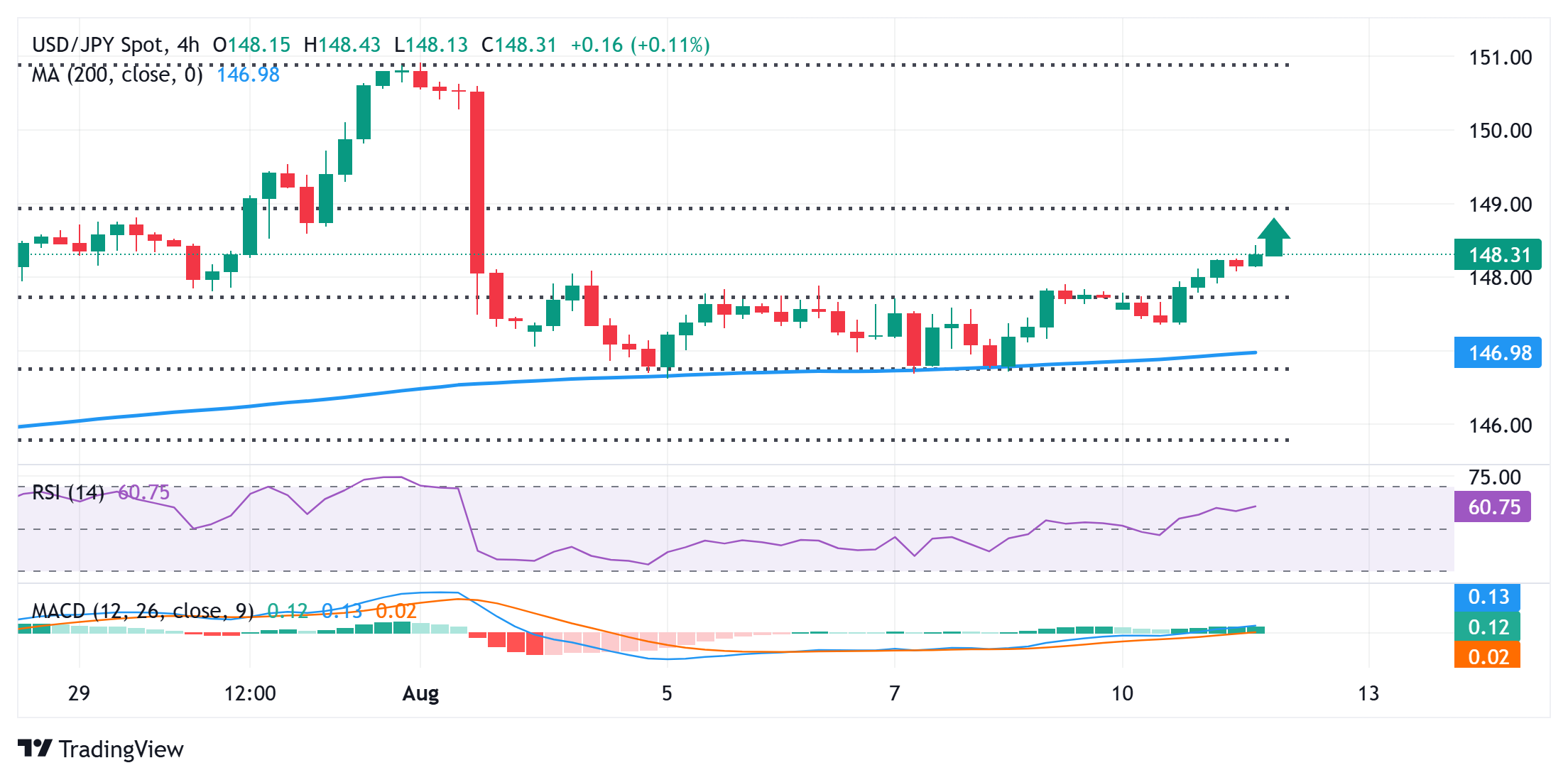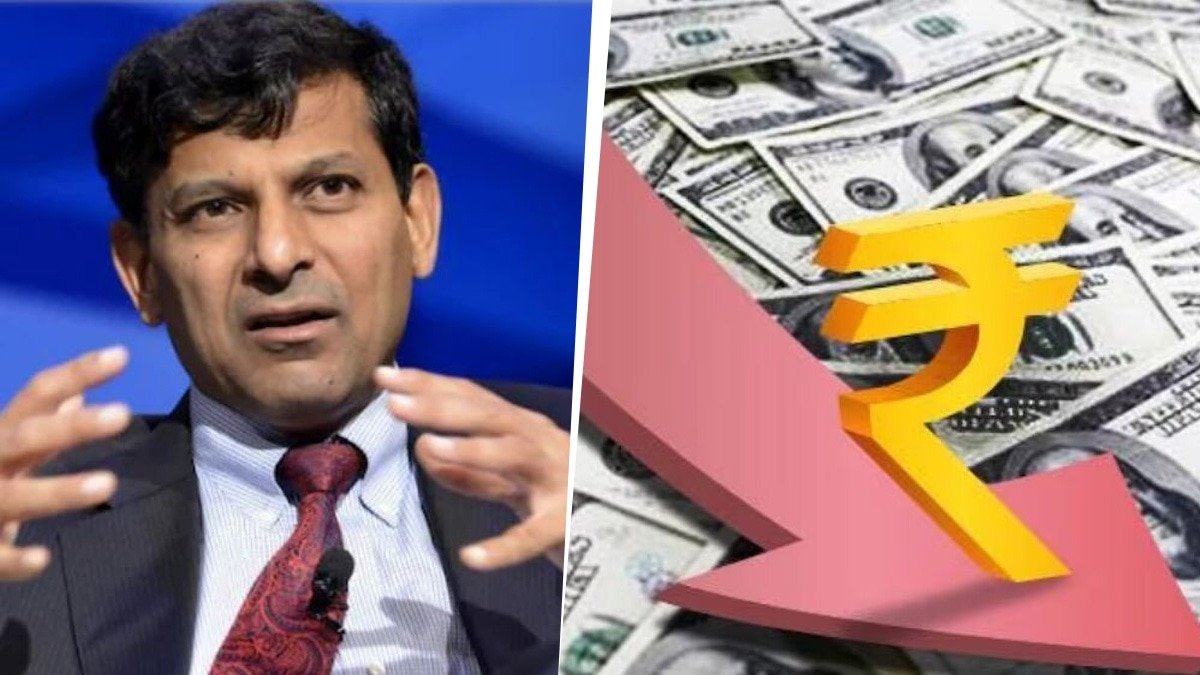- The Japanese Yen remains depressed amid mixed BoJ rate hike cues and a positive risk tone.
- However, the divergent BoJ-Fed policy expectations keep a lid on further gains for USD/JPY.
- Traders also seem reluctant and opt to wait for the release of the US consumer inflation data.
The Japanese Yen (JPY) drifts lower against its American counterpart for the third straight day and slides to a one-and-a-half-week low during the Asian session on Tuesday. Against the backdrop of political uncertainty, the potential negative impact of higher US tariffs on the domestic economy suggests that the prospects for further policy normalization by the Bank of Japan (BoJ) could be delayed further. This, along with a generally positive tone around the equity markets, continues to undermine the safe-haven JPY.
That said, an upward revision in the forecast for inflation by the BoJ in July leaves the door open for an imminent rate hike by the end of this year. In contrast, the odds of a rate cut by the Federal Reserve (Fed) surged in reaction to the weaker-than-expected July jobs report earlier this month. This, in turn, keeps a lid on any further US Dollar (USD) appreciation and helps limit losses for the lower-yielding JPY. Traders might also opt to wait for the US consumer inflation figures, which might contribute to capping the USD/JPY pair.
Japanese Yen bulls remain on the sidelines as receding safe-haven demand offsets relatively hawkish BoJ
- Data released last week showed that inflation-adjusted real wages in Japan fell for the sixth straight month in June and fueled concerns about a consumption-led recovery. This comes on top of growing worries about Japan’s fiscal health amid calls from the opposition to boost spending and cut taxes, especially after the ruling Liberal Democratic Party’s loss in the upper house election on July 20.
- Investors appeared to largely shrug off the latest tariff escalation, which is evident from the underlying bullish tone around the global equity markets. This further contributes to the safe-haven Japanese Yen’s relative underperformance against the US Dollar for the third consecutive day on Tuesday and lifts the USD/JPY pair to a one-and-a-half-week high during the Asian session.
- The BoJ’s Summary of Opinions released last Friday showed that policymakers debated the likelihood of resuming interest rate increases. Furthermore, the BoJ had revised up its inflation outlook in July, and reiterated that it will hike interest rates further if growth and inflation continue to advance in line with its estimates. This, in turn, might hold back the JPY bears from placing aggressive bets.
- Traders are overwhelmingly betting that the US Federal Reserve will resume its rate-cutting cycle in September and deliver at least two 25-basis-point rate cuts by the end of this year amid signs that the economy could be weakening. The expectations were lifted by the disappointing release of the US Nonfarm Payrolls report, which showed that employers hit the brakes on hiring in July.
- This, in turn, fails to assist the US Dollar to capitalize on its gains registered over the past two days and acts as a headwind for the USD/JPY pair. Traders also seem reluctant and keenly await the release of the latest US consumer inflation figures, due later during the North American session. The crucial data would influence Fed rate-cut expectations and, in turn, drive the USD demand.
- Investors will further take cues from speeches by influential FOMC members, which should provide some meaningful impetus to the USD/JPY pair. This week’s economic docket also features the release of the US Producer Price Index on Thursday and the Preliminary Q2 GDP print from Japan on Friday. This could further infuse volatility around the USD/JPY pair during the latter part of the week.
USD/JPY could extend the positive move to the 23.6% Fibo. retracement at 149.00

The overnight breakout through the 147.75-147.80 hurdle (38.2% Fibonacci retracement level of the July upswing) and a close above the 148.00 round figure could be seen as a key trigger for the USD/JPY pair. Moreover, slightly positive oscillators on the daily chart suggest that the path of least resistance for spot prices is to the upside. Some follow-through buying beyond the 148.45-148.50 region will reaffirm the constructive outlook and lift the pair towards the 149.00 neighborhood, or the 23.6% Fibo. retracement level.
On the flip side, the 148.00 mark, followed by the 147.80-147.75 region, could offer immediate support to the USD/JPY pair. Any further decline could be seen as a buying opportunity near the 147.00 round figure and remain limited near the 146.80 confluence – comprising the 200-period Simple Moving Average (SMA) on the 4-hour and the 50% Fibo. retracement level. A convincing break below the latter, however, might prompt some technical selling and drag spot prices to sub-146.00 levels, or the 61.8% Fibo. retracement level. The downward trajectory could extend further and eventually drag the pair to the 145.00 psychological mark.
Bank of Japan FAQs
The Bank of Japan (BoJ) is the Japanese central bank, which sets monetary policy in the country. Its mandate is to issue banknotes and carry out currency and monetary control to ensure price stability, which means an inflation target of around 2%.
The Bank of Japan embarked in an ultra-loose monetary policy in 2013 in order to stimulate the economy and fuel inflation amid a low-inflationary environment. The bank’s policy is based on Quantitative and Qualitative Easing (QQE), or printing notes to buy assets such as government or corporate bonds to provide liquidity. In 2016, the bank doubled down on its strategy and further loosened policy by first introducing negative interest rates and then directly controlling the yield of its 10-year government bonds. In March 2024, the BoJ lifted interest rates, effectively retreating from the ultra-loose monetary policy stance.
The Bank’s massive stimulus caused the Yen to depreciate against its main currency peers. This process exacerbated in 2022 and 2023 due to an increasing policy divergence between the Bank of Japan and other main central banks, which opted to increase interest rates sharply to fight decades-high levels of inflation. The BoJ’s policy led to a widening differential with other currencies, dragging down the value of the Yen. This trend partly reversed in 2024, when the BoJ decided to abandon its ultra-loose policy stance.
A weaker Yen and the spike in global energy prices led to an increase in Japanese inflation, which exceeded the BoJ’s 2% target. The prospect of rising salaries in the country – a key element fuelling inflation – also contributed to the move.







